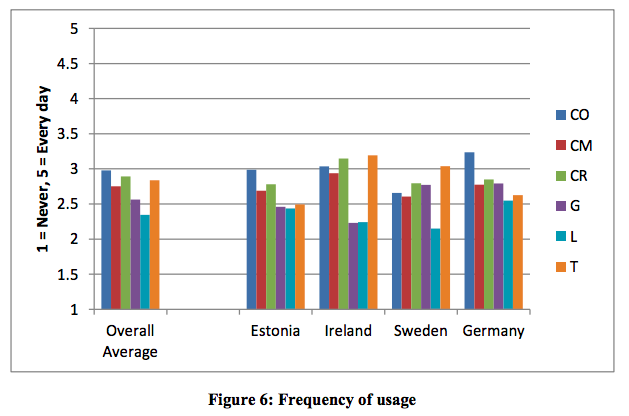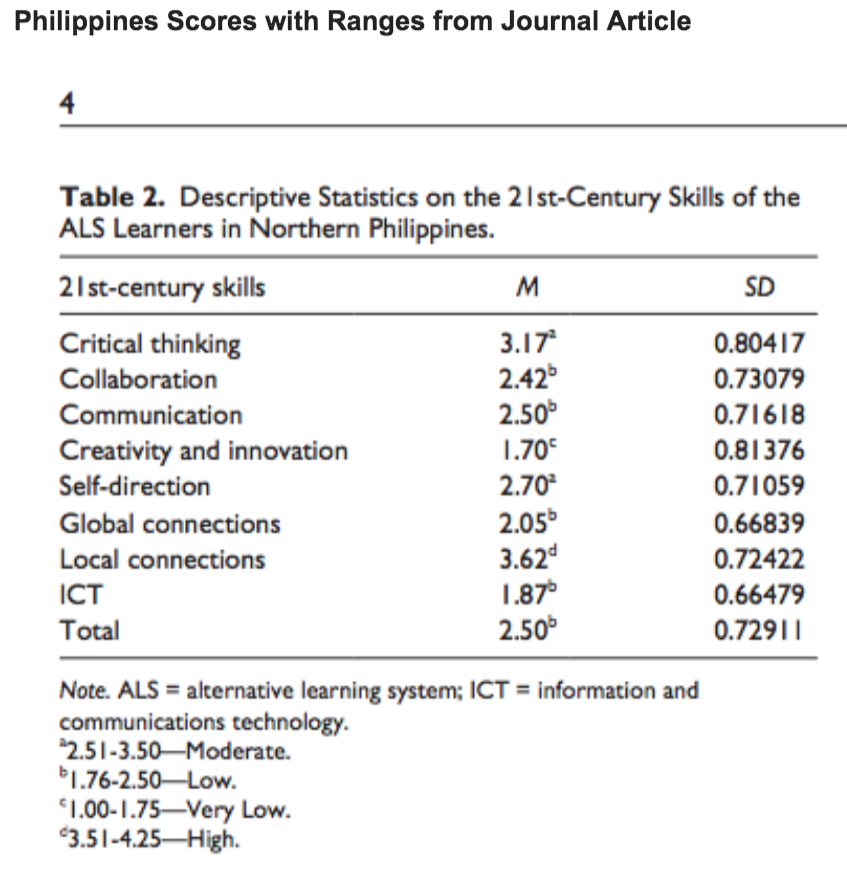Several international researchers have asked if there is a way to assign ratings to teachers based on use of the WVDE survey.
ANSWER: Our study did NOT report high, medium, and low cut points for the 21st century teaching indicators. We did report average scores — from which you can generate your own criteria or cut points. Our findings use z-scores (Mean = 0.00 and SD=1.00) which are helpful in many ways, but not for setting baseline measures. To see baseline measures, you have to see the actual mean scores, reported with the study findings. We highlight key findings using cut points for specific items. These can also be used as comparison data for your study.
“Math teachers who used PBL reported more student collaboration than others. For example, 78% said students created joint products using contributions from each student weekly, compared to only 7% of comparison teachers.” Ravitz, J. (2013). Math, PBL and 21st Century Learning for All Students. Guest blog on Edutopia.org. March 27, 2013. edutopia.org/blog/math-PBL-21st-century-learning-jason-ravitz
How do your students compare? To compare your learners to our study, see the raw mean scores (not Z-scores) here:
- Ravitz, J., Hixson, N., English, M., & Mergendoller, J. (2011). Using project based learning to teach 21st century skills: Findings from a statewide initiative. Vancouver, BC.
- Appendix A: Practices for each skill with mean, standard deviation and min/max (p. 8)
- Hixson, N., Ravitz, J. & Whisman (2012). The impacts of extended PBL professional development on West Virginia teachers. West Virginia Department of Education. Charleston, WV.
- Table 3: Mean Perceptions of 21st Century Skills Taught by PBL Use (p. 13)
- Table A10. Means on Practices Items for Each Skill, by PBL (pp. 74-76)
Options to consider (with your research advisors and stakeholders)
A. Use mean scores to compare to West Virginia teachers: These will allow you to compare your teachers to PBL and non-PBL teachers from West Virginia, including in different subject areas. Your teachers may be closer to non-PBL, unless they have substantial experience and professional development.
If you want to compare to EU teachers : see the study from Trinity College at Dublin published a series of EU studies using the framework.
B. Divide YOUR teachers into groups based on their scores : There is no high-medium-low standard set by our study, but you can set these yourself and report results. A Philippines study (see below) generated 4 ranges for scores : Very Low (1.00-1.75); Low (1.76-2.50), Moderate (2.51-3.50), High (3.51-4.25). These can be references for a peer-reviewed source outside the US.
C. Find more similar uses of this survey. Findings other studies that are closer (in purpose, context, subject-area, etc.) could be more useful for comparison than the US study.
Please contact us about your use of the survey!
Philippines Study
Tindowen, D. J. C., Bassig, J. M., & Cagurangan, J. A. (2017). Twenty-First-Century skills of alternative learning system learners. SAGE Open, 7(3), 2158244017726116. [Note for future users: 4.25 was the highest mean but upper limit is 5.00. ]
EU Study

Report on Readiness for the Integration of 21st Century Practices in European Classrooms. The TfT project has received funding from the European Union Erasmus+ Programme under grant agreement n° 2015-1-IE01-KA201-008620. Tft-project.eu is part of the larger Bridge 21 project that includes a series of studies, including pre-post and math-focused, all using the same framework.
Other studies

